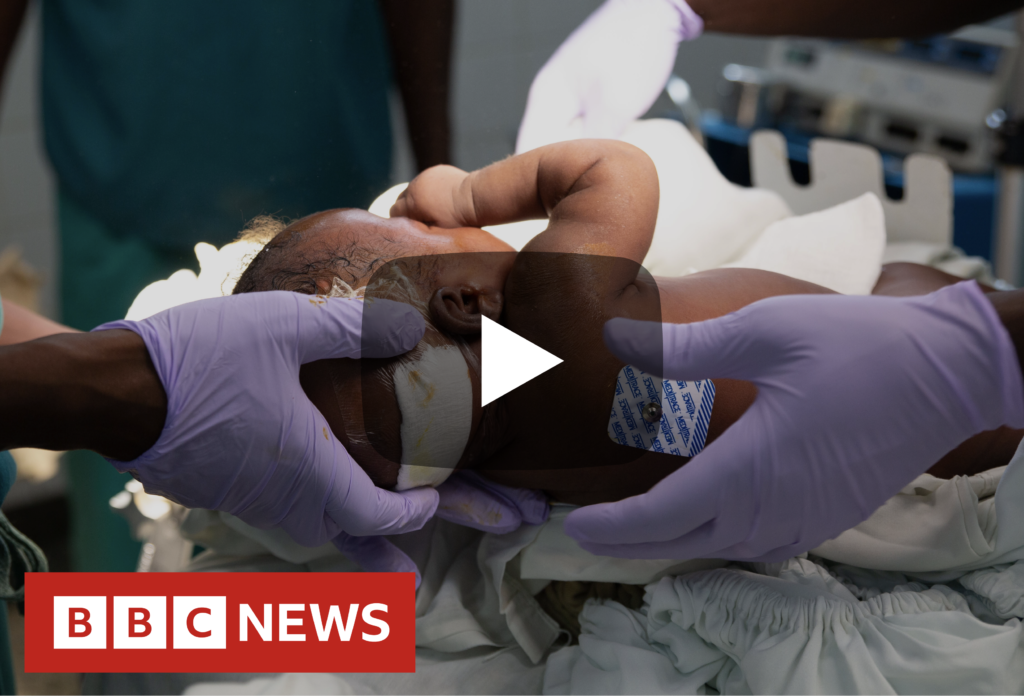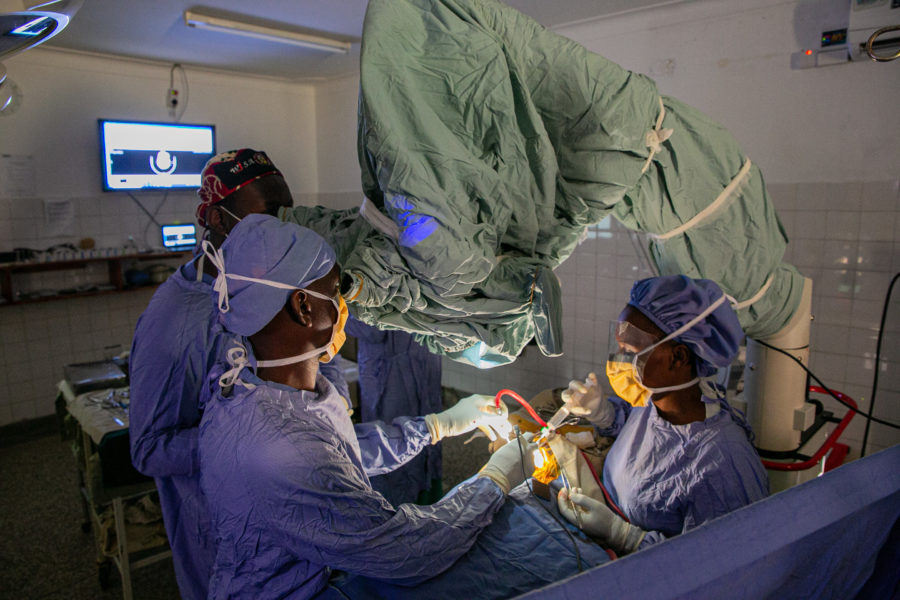- Child Stories
- Conditions We Treat
- News
- CURE Kenya
- CURE Neuro
- CURE Uganda
- Dr. Emmanuel Wegoye
- ETV
- Hydrocephalus
- Neurosurgery
BBC News Features CURE Uganda’s Shuntless Solution for Hydrocephalus
Thursday, September 8, 2022 at 1:27 pm
Thirteen years ago in Kenya, a two-week-old baby named Milan was diagnosed with acquired hydrocephalus, a life-threatening condition in which fluid builds up inside the child’s brain at the time of birth or shortly after.
With no time to waste, Henry and Carol bundled up their baby and travelled from Kenya to CURE Children’s Hospital of Uganda (CURE Uganda), which came highly recommended for its surgical excellence and compassionate care.
“We knew that we wanted to do whatever we could to give hope to our child,” says Henry, Milan’s father.
Fast forward to 2022: Milan is a smart, healthy, creative young teen boy who loves playing chess, enjoys riding his bike around the neighbourhood, and, as his mother happily shares, “is doing very well … his milestones have all been fine.”
BBC News visited CURE Uganda in May to document Milan’s incredible healing and to raise awareness of endoscopic third ventriculostomy (ETV), an alternative treatment that CURE neurosurgeon Dr. Emmanuel Wegoye chose for Milan back in 2009.
Effective alternative
“What’s unique about this treatment is that it provides a shuntless solution for hydrocephalus,” says Dr. Wegoye. “The children do not have any foreign hardware in their bodies.”
The standard treatment for hydrocephalus involves the surgical implantation of a hollow tube in the brain to help drain off excess fluid. This device is called a shunt, which can require periodic replacement. In contrast, the ETV option is a one-time procedure “with fewer long-term complications compared to patients with shunts,” says Dr. Wegoye.
Since 2001, CURE Uganda has performed more than 16,000 surgeries for patients with hydrocephalus across Africa and has trained 65 neurosurgeons from around the world on the ETV procedure. During the 2022 fiscal year, CURE Uganda performed 1,700 neurosurgeries, 500 of which involved the ETV procedure.
Early treatment and support
Dr. Wegoye points out that early intervention is key to a successful hydrocephalus treatment, adding that “late treatment puts the child at a greater risk of not reaching key developmental milestones.” Milan’s two-hour ETV surgery was a success largely because his parents brought him to CURE Uganda very early on in his life.
That kind of love and support makes the difference between helplessness and healing for a child with a disability. Sadly, the same cannot be said about some communities in Uganda.
“Very often, mothers with children suffering from hydrocephalus come to us feeling rejected and alone,” says Dr. Wegoye. “In certain societies, these children are left in dark rooms, left there to die.”
By God’s grace and with the generous support of CURE ministry partners, CURE Uganda — and the rest of CURE hospitals in Africa and the Philippines — shines the light of God’s grace in places darkened by discrimination and stigma. Patients not only receive the best of medical care, but they are also nurtured spiritually, with ministry teams praying for them and their families. And when their time at CURE is over, they return to their communities with renewed hope and faith that they can live out their God-given potential.
Like Milan, many of them grow up healthy, productive, and grateful for the goodness of God.
Learn how you can become an essential part of our life-saving efforts.
Related Articles
- Expecting a Blessing: After Years of Waiting, Evance Receives Clubfoot Surgery
- From Pain to Peace Because of You
- Living Her Dreams: New Milestones, New Beginnings, and Abundant Blessings
- This is Carmen!
- Eda’s Dream: A Young Girl’s Journey to Healing and Her Goal of Becoming a Nurse
- The CUREkid that melted the heart of the President
Categories
About the Author: Melissa Hall
Melissa joined CURE UK in June 2021, heading up Marketing, Communications, and Events. On her visit to CURE Children's Hospital of Zimbabwe in September 2022 she experienced the people and the environment that makes a CURE hospital so special! She makes every effort to communicate this to readers everywhere.
